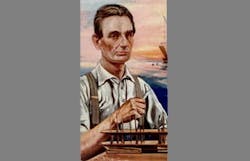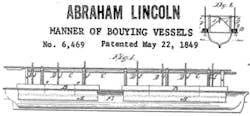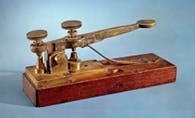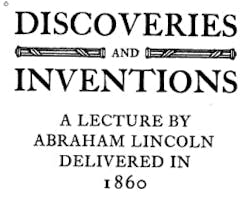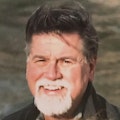The greatest American: Inventor and innovation evangelist!
Ever wonder if any American president was a U.S. patent-bearing inventor? The answer is yes and only one to date. Read on and discover the depth and passion this U.S. president had for invention and innovation. The story of his manifestation of these passions is an inspiration for all inventors to this day—a real testimony to not only its importance to our employers, but our nation and its economy. My own passion for invention is in some way validated by this little-known history.
Invention has been at the core of the American experience and history since the founding of the American Patent System by the act of April 10, 1790. Thomas Jefferson, then Secretary of State, observed during his residence abroad the encouragement and protection extended by other countries to inventive skill and industry, and the exclusive privileges granted to producing things new and useful in art, science, literature, and mechanics.1 A formal U.S. Patent System followed the founding of the country by a mere 14 years.
In 1849, “The Greatest American” Abraham Lincoln, the 16th president of the United States, was issued U.S. Patent No. 6469, “Manner of Buoying Vessels.”2
A little backstory on how Lincoln, at the age of 40, became an inventor of nautical things: During his brief stint as a ferryman (~1828, at 19 to 20 years old) along the Mississippi River, Lincoln was stranded twice on riverboats run aground.3
His invention used adjustable buoyant air chambers attached to the sides of a boat. They could be lowered into the water and inflated to lift the boat over obstructions within the water. Lincoln whittled the scale patent model while Walter Davis, a Springfield mechanic, provided tools and advice for the model. Up until 1880, the U.S. Patent Office required a scale model submitted with each patent application.4 The device was never produced for practical use and doubts remain as to whether it would have been a useful invention due to the amount of force needed to lower and fill the air chambers.
In his patent application, Lincoln provided the following abstract as to the intent and scope of his invention:
“Be it known that I, Abraham Lincoln, of Springfield, in the County of Sangamon, in the State of Illinois, have invented a new and improved manner of combining adjustable buoyant air chambers with a steamboat or other vessel for the purpose of enabling their draught of water to be readily lessened to enable them to pass over bars, or through shallow water, without discharging their cargoes; and I do hereby declare the following to be a full, clear, and exact description thereof, reference being had to the accompanying drawings making a part of this specification.”
Lincoln’s mind for technical advancement and invention evolved and was strengthened by his filing and issuance of this patent for his invention. In his book, Jason Emerson, author of “Lincoln the Inventor”5 wrote: “He never came across a machine or invention or scientific idea that he did not stop to investigate, both physically and mentally.” Emerson further says: “He not only created his own invention but had ideas for other inventions, such as an agricultural steam plow and a naval steam ram, and was fascinated by patent cases as an attorney and also by new innovations during the Civil War.”
Lincoln, as an avid follower of new technologies of his time, tested new rifle inventions on the lawn of the White House before and during the U.S. Civil War. He personally tested both the Spencer seven-shot rifle and the seven-shot carbine there. He took seriously the responsibility to ensure that Union troops were equipped with the most effective and modern armaments possible. Other weapons he tested included the coffee-mill gun, an early version of a hand-cranked machine gun. His observation of testing of big naval guns at the navy yard on the Anacostia River is also noted by historians and led to the development of a close friendship with John Dahlgren, head of the navy yard (later an admiral) and a weapons expert. Lincoln grew his understanding of important technology of his time though relationships that would lead to more informed and deeper understanding of these developing, and critical in times of war, apparatus.
Although Lincoln was a weapons and armament technology authority, in large part due to the Civil War (1861 to 1865), this was not his most astute leverage of the technology of the time to enable the victorious end of the war.
Alternatively, it was his use of the form of instant messaging of the day—the telegraph—to command and provide direct orders for troop movements starting in early 1862 through his assassination.
In this manner, he overcame the way-too-common lack of leadership within the ranks of the Union’s senior officer corps through his introduction and invention, if you will, of the modern electronic leadership model.6 Actually, several recently written books were published on these topics, including in 2008 and 2009: Mr. Lincoln's T-Mails: The Untold Story of How Abraham Lincoln Used the Telegraph to Win the Civil War7 and Mr. Lincoln's High-Tech War: How the North Used the Telegraph, Railroads, Surveillance Balloons, Ironclads, High-Powered Weapons, and More to Win the Civil War.8
The books’ authors detail the use of this then-two-decades-old telegraph technology and other new technologies and inventions of the time to win the war. Like Lincoln, it’s an interesting side note that Samuel Morris, the inventor of the revolutionary telegraph (1849), initially was not a trained technician but rather an artist by trade. Only later did Morris develop his electrical arts skillset to execute and invent the telegraph. Both books are worth a read.
What I find most interesting and revealing about Lincoln as a champion and evangelist of technology was his chosen path prior to running for and becoming president. Just prior to his election as president in 1860, Lincoln gained some fame from his debates about slavery with Stephen Douglas (1858) on what was then called the lyceum circuit. He chose to continue his appearances on the circuit in town theaters and opera halls with his only two lyceum lectures both titled “Discoveries and Inventions.”9
A glimpse of this topic’s intrinsic merit to Lincoln is provided by the opening lines of the first lecture: “Man is not the only animal who labors; but he is the only one who improves his workmanship. This improvement he effects by discoveries and inventions.” I note this because I find it both fitting and heartening that Lincoln, who had an unfaltering eye to what was important for America as it became a serious nation in the world’s social and economic order, so embraced this topic. He understood not only that America needed to be a country of justice and fair-and-equal social standing, but a land that understood the nature and importance of invention and innovation if it were to forge an exceptional economic future.
Takeaway on why it matters
It should be noted that Lincoln was not a formally trained engineer, scientist, or mechanic. He was self-trained in some interest-driven arts, both technological and scientific, of his time. He drew on his short experience as a riverboat ferryman to understand a critical problem of that industry. He then fashioned a novel solution that he brought to some prominence in the day via the issue of his U.S. patent. In this case, it is not so much whether the invention was a commercial success but the message conveyed to a young nation that invention and innovation were in his mind core to the economic success of a nation. His lectures on these topics were an exclamation point to this sentiment.
This message should have deep resonance for us today not because it is profoundly unique but rather its source was an individual of profound values, insight, and intellect, “The Greatest American” Abraham Lincoln.
His message, evolved for our present-day workplace, is: Understand a customer’s critical problem and pursue a solution, regardless of your technical background. It is how your enterprise and you will succeed going forward. It should also not be lost upon us that Lincoln continued to invent during the war and used his inventions to win it. Similarly, though we are always ‘in the war’ of projects and deadlines, we can and should continue to invent and seek opportunity to improve our craft during these moments as well.
It is within all of us to innovate. Today is a good day to file an invention disclosure! Just do it.
REFERENCES
- See www.ipmall.info/content/patent-history-materials-index-brief-history-united-states-patent-office-its-foundation-1790.
- See https://catalog.archives.gov/id/2524934.
- See www.gilderlehrman.org/history-resources/spotlight-primary-source/abraham-lincoln-inventor-1849.
- See www.nytimes.com/2002/02/18/business/patents-models-that-were-once-required-application-process-find-good-home.html.
- J. Emerson, “Lincoln the Inventor,” Southern Illinois University Press (2009).
- See www.usnews.com/news/history/articles/2009/02/11/abraham-lincoln-a-technology-leader-of-his-time.
- T. Wheeler, “Mr. Lincoln's T-Mails: The Untold Story of How Abraham Lincoln Used the Telegraph to Win the Civil War,” Harper Collins Publishers, New York, NY (2008).
- R. Allen and T. Allen, “Mr. Lincoln's High-Tech War: How the North Used the Telegraph, Railroads, Surveillance Balloons, Ironclads, High-Powered Weapons, and More to Win the Civil War,” National Geographic Publishing, Boone, IA (2009).
- A. Lincoln, “Discoveries and Inventions – A Lecture by Abraham Lincoln Delivered in 1860,” John Howell Publishers, San Francisco (1915).
About the Author
Fred Thomas
Fred Thomas works in HP’s Advanced Compute and Solutions (ACS) Business as a HP Distinguished Technologist. He has degrees in Mechanical Engineering and Physics from Bucknell University. Among his roles in ACS is Structured Innovation Lead for R&D, where he facilitates their organization-wide Friday Morning Innovation sessions. He is also ACS’s Patent Technical Coordinator. His innovative work product has included crucial inventions in products like HP Z Captis, HP MediaSmart Home Server, HP digital EO pen technologies, Iomega Zip, Jaz, Floptical & Clik! data storage drives, Identi-Key machine vision for retail key blank recognition, and AO-DVD subwavelength optical data storage, among others. Thomas has been with HP 18 years and with more than 100 U.S. Patents, has been around the IP (Intellectual Property) horn a few times. Outside of work and inventing things, he enjoys hiking with his family, reading, watching select sports, and a good Will Ferrell movie here and there.
